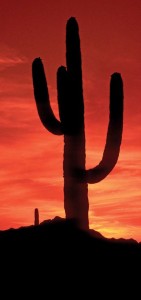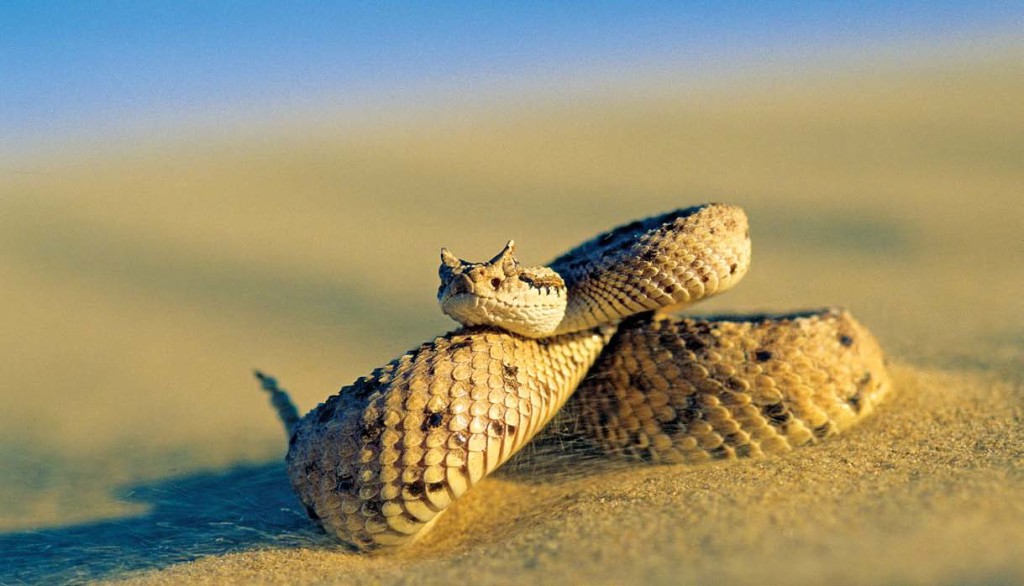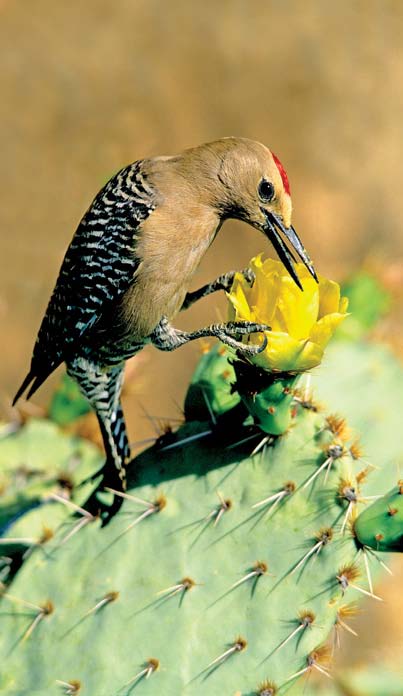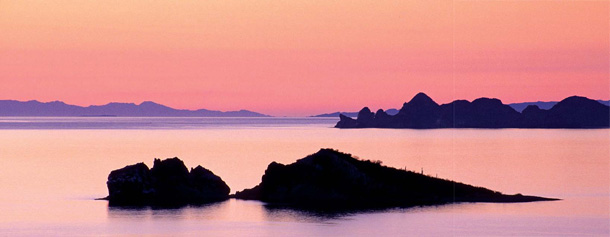 |
 |
I like snakes, and I’m never happier than when I find a snake to photograph. A few years ago, I traveled to Baja, Mexico with two friends from the University of Arizona on one of my quests for serpentine subjects. Their goal was to collect rattlesnakes for the university. My goal was to hang out with them in the desert, learn as much as I could about rattlesnakes and maybe get some photographs in the bargain. We spent a week in the sweltering desert heat, camping and crawling around, searching various rattlesnake haunts. On our return to the United States we got pulled over at a Mexican police roadblock. At least I think they were police, but I never asked for their identification (Pro Photo Tip #127: Never question anyone who is wielding a machine gun for their I.D.). None of us had showered or shaved for over a week so the police may have pulled us over because they had caught our scent wafting down the highway. The good news was that we had caught a number of rattlesnakes for the university and we had the live snakes in a Styrofoam cooler sitting on the back seat of the car.
The snakes shared the cooler with a block of stale cheese, some moldy bread and a few wrinkled sticks of pepperoni. The bad news was that we had no permits for the snakes and had collected them illegally. The police were probably looking for drug smugglers and we fit the description of pot-smoking, drug-running gringos perfectly. Normally, stories involving agitated Mexican police, automatic weapons, grubby biologists, and deadly venomous snakes do not end well. As it turned out, the police checked every part of the car but mysteriously ignored the cooler and its contents. As we drove away I joked to my buddies that we had escaped because the police probably thought the food in our cooler would smell worse than we did. I have photographed in many of the major deserts of the world: the Sahara, Kalahari and Namib in Africa, the Atacama in South America and the Gibson & Victoria Deserts in Australia, but without question the desert I enjoy most is the Sonoran Desert in North America. The Sonoran forms a horseshoe around the upper end of the Gulf of California. A large part of the desert is in northwestern Mexico, but it also crosses the border into Arizona and southern California. The Sonoran has more species of birds, more varieties of wild flowers, more kinds of spiny cactuses, more lizards and snakes, and more spiders, scorpions and other creepy crawlies than any of the other deserts in North America. On my last visit, I saw dozens of different birds including four species of owls (great horned owl, spotted owl, whiskered screech-owl and elf owl), an elusive shovel-nosed snake, and a rarely-seen black and pink gila monster, all in the same day. I confess, I am a cactus hugger, but every time I visit the Sonoran Desert I see something new, exciting and surprising.
If you search any dictionary for the word desert the definitions usually include a barren, uninteresting, worthless place. How wrong that is, especially of the Sonoran Desert. Deserts are not empty, boring wastelands, but energizing wild areas filled with fascinating animals and plants, and landscapes that are breathtaking in their raw simplicity.
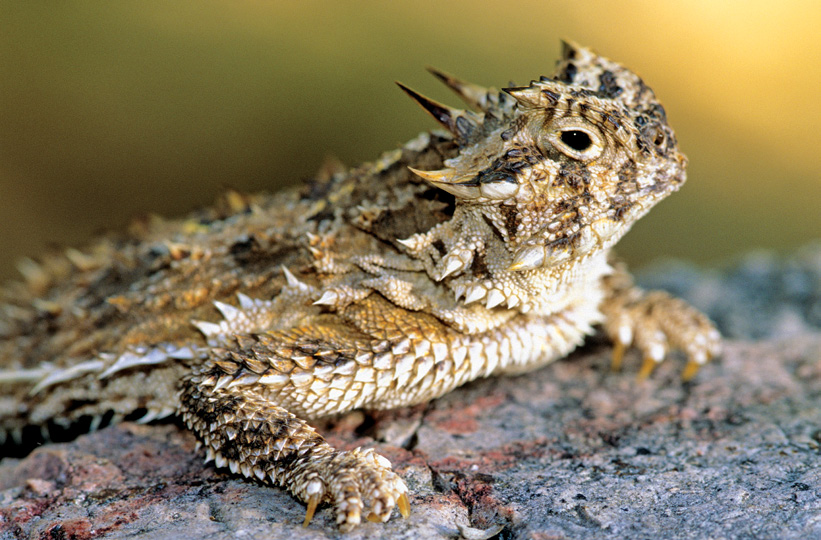 Texas Horned Lizard |
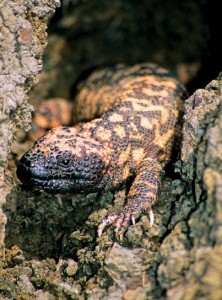 Gila Monster |
Late April to early June are great months for reptile, bird and mammal photography.
Two of my favourite locations to photograph in the Sonoran Desert are Saguaro (pronounced sa-WAH-ro) National Park in southern Arizona and the Algodones (pronounced al-go-DOE-ness) Dunes in the southeast corner of California. Saguaro National Park is divided into two sections located on either side of the city of Tucson. The western section is located at the base of the rugged Tucson Mountains and the eastern section is at the base of the Rincon Mountains. Both sections are scenically beautiful with crowded forests of saguaro cactuses which can grow up to 15 metres tall and live for 150 years. The stately saguaro with its many arms is the unofficial symbol of the Sonoran Desert. Between the towering saguaros there are innumerable other cactuses with such appealing names as teddy bear cholla, jumping cholla, staghorn cholla, strawberry hedgehog cactus, fishhook barrel cactus, and beavertail prickly pear cactus. When the cactuses are in bloom in April and May a photographer can willfully waste countless relaxing hours savouring and recording the beauty and artistry of their waxy petals.
The Algodones Dunes in southern California is the northern tip of the Gran Desierto of Mexico, the greatest expanse of sand dunes in the entire Americas. The Gran Desierto was unknown to most a hundred years ago before radio, television, and motion pictures had been invented, and when most lovers of travel were armchair adventurers. In 1908, William Hornaday immortalized his pioneering travels to the area with the publication of his classic book Camp-Fires on Desert and Lava.
Today, the Algodones Dunes in southern California are the setting for innumerable Hollywood movies. Some of the area has been designated for off-road dune buggies and photographing in these areas is impossible, unless you want to capture wailing yahoos catapulting over the crests of dunes in determined stunts to challenge their mortality. Luckily, a greater part of the dunes have been set aside as a nature preserve and here you can enjoy the undulating ripple and wave of sensuous dunes and the comforting quiet of the desert.
All deserts have two things in common, they’re hot and they’re dry. For months on end in midsummer, the temperatures in southern Arizona can climb above 38°C (100°F). Some of the driest parts of the Sonoran Desert get less than 10 centimetres of rain in a year. Even the wettest areas get only 25 centimetres. The Sonoran Desert receives its scanty rainfall in two allotments; one in winter between December and March and another in summer as spectacular thunderstorms in July and August. I have always visited the area between March and June. In March and early April, if the winter rains are better than average the desert can erupt in an amazing carpet of wild flowers. Numerous sites on the internet post regular progress reports about the status of the flowers and searching these can help you locate the best displays, the location of which can change from year to year. Late April to early June are great months for reptile, bird and mammal photography. The temperatures are still not so high that creatures have become strictly nocturnal to escape the heat and a photographer can be comfortably active for many hours in the early morning and late afternoon. At this time of the year you will want to avoid the white-hot light and temperatures of midday when the best activity is lounging beside a swimming pool cradling a cool Corona. The spring months are also great for nighttime outings when it can be especially rewarding to look for snakes and the desert creepy crawlies such as spiders, scorpions, tarantulas, and centipedes. Unless a person has considerable experience working with snakes I would discourage you from handling them or any other desert creature, and to especially avoid any contact with venomous species. However, even without handling, snakes, as well as many desert invertebrates, can yield wonderful photographs and memorable experiences. In these photo situations I wear a headlamp to illuminate the subject for focusing and then use a single off-camera flash with a soft-box to diffuse the light. For Sonoran Desert. macro photography I prefer a longer lens such as a 200mm. With this focal length I am farther away from the subject and less likely to frighten it into moving away before I get the photographs I’m after.
Even if you never want to see a snake or a scorpion in your life, never like to hike when there isn’t snow on the ground, and have nightmares about cactuses and any other plants with dangerous sharp spines, the desert is still an area that has so much to offer any photographer that is willing to move beyond their comfort zone. The rewards may just be to discover creativity within you that you never knew existed.
Follow Wayne’s adventures at his website – www.waynelynch.ca and don’t miss his latest book ‘Planet Arctic – Life at the Top of the World‘ now
available online and through better bookstores everywhere.
Read other articles by Wayne Lynch



